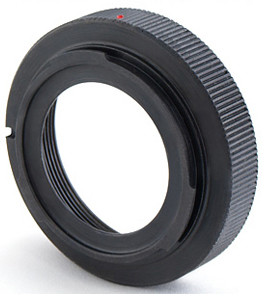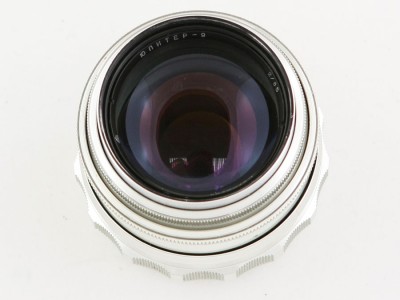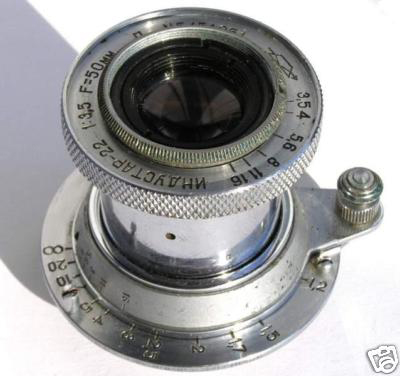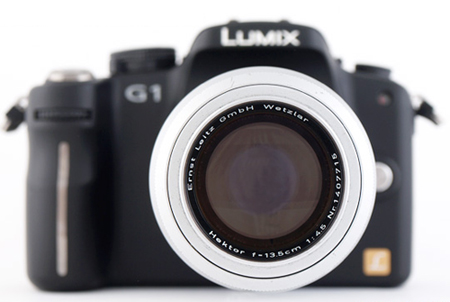by Galina Arlov

Henri Cartier-Bresson behind his rangefinder Leica
Henri Cartier-Bresson: photography book was a gift on my 16th birthday. His style of “street photography” or “real life reportage” style has influenced many photographers. Henri Cartier-Bresson exclusively used Leica 35 mm rangefinder cameras equipped with normal 50 mm lenses or occasionally a wide-angle for landscapes. He dismissed others’ applications of the term “art” to his photographs, which he thought were merely his gut reactions to moments in time that he had happened upon.
photography book was a gift on my 16th birthday. His style of “street photography” or “real life reportage” style has influenced many photographers. Henri Cartier-Bresson exclusively used Leica 35 mm rangefinder cameras equipped with normal 50 mm lenses or occasionally a wide-angle for landscapes. He dismissed others’ applications of the term “art” to his photographs, which he thought were merely his gut reactions to moments in time that he had happened upon.
Up until now I did not consider myself a professional photographer even though I studied photography in college for two years. However recently I decided to get a new photo equipment and experiment with “street photography” style or what I see the way it is at the moment that I see it.
My first attempt was on a trip to the Big Island, Hawaii where I was taking a Vipassana course and had a chance to experimented with a Panasonic Lumix DMC-FZ28S 10.1MP Digital Camera with 18x Wide Angle MEGA Optical Image Stabilized Zoom  lightweight, versatile, inexpensive ($300) carry-around which takes images (landscapes, macro, portrait, sport etc.). The camera body is light and good for travel and the lens and filmware are from Leica. AI function – simply great ! This camera makes beautiful images and is easy and fun to shoot that’s what its really all about, right? I do prefer the silver version over the black .. also the battery can be charged in 2 hrs instead of 5 or more hours. HD video at 720P…great bargain!
lightweight, versatile, inexpensive ($300) carry-around which takes images (landscapes, macro, portrait, sport etc.). The camera body is light and good for travel and the lens and filmware are from Leica. AI function – simply great ! This camera makes beautiful images and is easy and fun to shoot that’s what its really all about, right? I do prefer the silver version over the black .. also the battery can be charged in 2 hrs instead of 5 or more hours. HD video at 720P…great bargain!
Here are some of the pictures I took on that trip.

Before boarding a plane at Kona Airport I saw this beautiful tree across the field. It was my last picture on that trip before I went back to New York City.

Rain Forest at the Akaka Falls on the way from Puna to the Airport at Kona.

A rain forest flower at the Akaka Falls.
View more pictures frome the Hawaii Vipassana Course on Facebook.
© Copyright 2009 Galina Arlov. All Rights Reserved www.arlov.com
I was pretty happy about the results, and then I received several requests to do a professional photo shoot. A paying gig for doing something I enjoy doing! Sweet!
A good photographer can take a great photo even with a toy camera…however when taking on a paid assignment a professional lenses that can perform in a low light are essential. A good result must be guaranteed and to do that professional SLR equipment is required. So my quest for a good set of lenses and a digital RF body have began.
Until now, there has been little competition in the rangefinder market. Of course there is the Leica M8.2 Body Digital Rangefinder Camera  , but with a price of $5,995.00, (just for the body, Leica Summicron-M – Telephoto lens – 90 mm – f/2.0 – Leica M
, but with a price of $5,995.00, (just for the body, Leica Summicron-M – Telephoto lens – 90 mm – f/2.0 – Leica M at $3,449 + each are not included) you have to be a hardcore Leica fanatic to own one.
at $3,449 + each are not included) you have to be a hardcore Leica fanatic to own one.
I wanted a good set of optics and a digital body which can be replaced and the lenses re-mounted on a newer version. However the choices were limited until May of 2009 when Panasonic announced a M mount adapter for the 4/3 cameras which created an opportunity to experiment with a wide range of the esoteric lenses. Micro 4/3 System Adapters Voighlander Leica M Micro 4/3 Digital Lens Adapters $149 or CameraQuest Canon FD.FL Adapters $175 for Micro 4/3 cameras like Panasonic G1. Leica M and Canon FD/FL lens adapters, or one on the most interesting items is a M39-micro 4/3 adapter for Russian vintage lenses pictures and description of the lenses are listed below. Some of the vintage Russian lenses have superior optics. Most of them were based/copies of Carl Zeiss designs click here to learn more about Russian lenses.
With Panasonic Lumix DMC-G1 12.1MP Digital Camera with Lumix G Vario 14-45 mm f/3.5-5.6 ASPH Mega OIS Lens  Lumix G1, M adapter and a set of Russian RF Lenses I could put together a Leica M8 equivalent for under $1000!
Lumix G1, M adapter and a set of Russian RF Lenses I could put together a Leica M8 equivalent for under $1000!
=====================================================
Reference for Adapters and Russian Vintage Lenses.
ADAPTERS:
Panasonic, Olympus and generic adapters allow the use of movable MF assist function, which enlarges a selected area when focusing manually. The new adapters add to the list of third-party adapters designed to attach Leica M or R lenses to the DMC-G1 and Panasonic DMC-GH1 12MP Four Thirds Interchangeable Lens Camera with 1080p HD Video “
“

Olympus $179

Leica M to Micro 4/3 Adapter by RJ Camera $89,00
M39-micro 4/3 adapter for Russian vintage lenses
The adapter is adjusted for the Micro Four Thirds system mount (micro 4/3) Olympus/Panasonic cameras ( Panasonic Lumix G-1, G1-HD …). It is also adapted to the soviet optical instruments and devices M39 and Leica M39. It is made of steel and this allows making free use of big and heavy lenses. It has black chemical protective mat surface, knurl, the red mark for convenient use.
The mode of the shoot with the adapter.
A clearly mechanical lens fastening М39-micro 4/3 with the help of the adapter does not allow us aperture control and auto-focusing control. Now you should do everything manually when you are setting parameters on your very lens. In some cases this is even more convenient. The shooting should be done in the A or P mode . When using these modes the camera sets down the exposure value automatically, but the latter is dependent on those parameters of the aperture that you have already set down on your lens.
Manual focus is realized through the electronic viewfinder (EVF) of the camera. Increase mode 7-10х is direct in the viewfinder allows to be guided quickly and precisely. Manual focus also conveniently realized through viewing angle articulated LCD monitor in LiveView mode with increase in any area of a shot at 7-10х.
It should be also taken into account that when using the optical instruments and devices M39 the effective focal length and the visual angle of the lens are doubled.
Generic M 39 you may get for FREE on eBay from one of the sellers of Russian Vintage cameras. (I did from Russian Vintage on eBay. Thank you grandseller), or you can buy them for a reasonable price on eBay or Amazon.

M39 mount adapter for micro 4/3
LENSES:
After researching the lenses that were based on Carl Zeiss design I found out that Jupiter 9 portrait lens is the most desirable of them all with a hefty price of $150 to $240 on eBay or other web sites. Most of the other lenses are more than affordable with prices starting from $7.00. Now that is a bargain for high quality optics. Click here to learn more about Russian/Soviet lenses.
- Jupiter-9 portrait 85mm f/2 lens M39 Zenit Pentax EXC++
- Russian Elmar lens 3.5/50mm M39 for Leica Zorki Fed
- 1962 RUSSIAN SONNAR SLR LENS JUPITER-11 4/135 M39
- 1968 JUPITER-8 50 mm f/2 SONNAR COPY LEICA M39 LTM LENS
- FED 50mm/3.5 Russian Collapsible Lens M39 Leica, Zorki
- Industar-26m 52mm f/2.8 Rare lens M39 Fed Zorki Leica

Jupiter 9

Elmar

Leitz
Summary:
Enter the $600 Lumix G1, the world’s first micro four-thirds camera system. The Micr0 4/3 Standard eliminates the heavy mirror box and shutter mechanisms seen in SLR’s like Canon and Nikon, instead opting for a Live View Finder. This saves on weight, bulk, and decreases camera shake. Because the G1’s lenses are interchangeable, this titillated all Leica fanatics and M lens owners… with an adapter you can hook up your collection of M lenses to a newfangled and modern digital body. But how does the G1/Leica compare to the Leica M8? Or a Canon 5d mkII? In short. It is good, very good. From a price/performance ratio standpoint, it is really hard to beat the quality of the G1 with an M lens. Keep in mind, not all M lenses are expensive. There are brands like Voigtlander and Zeiss that make much more affordable M lenses. There is also a large secondhand market for Leica lenses as well, which are still expensive, but hold their value very well. The primary advantage to using M lenses is their low light capability, as well as compactness and build quality.
Reference for the summary is courtesy: HKGadgetMan
Special Thanks to LeCanov-Harlow Vitaly for all the technical information, and eBay seller dudlik_spb for his patience and helpful information.
July 6, 2009
Categories: Uncategorized . . Author: Administrator . Comments: Leave a comment


















